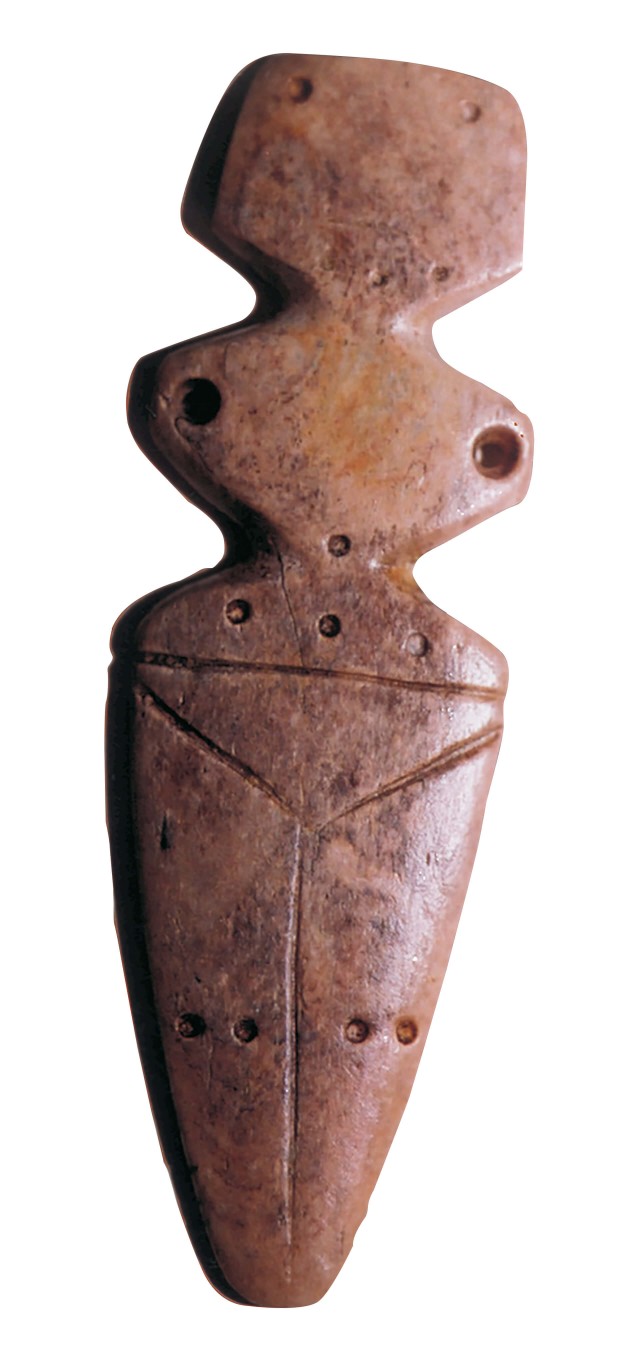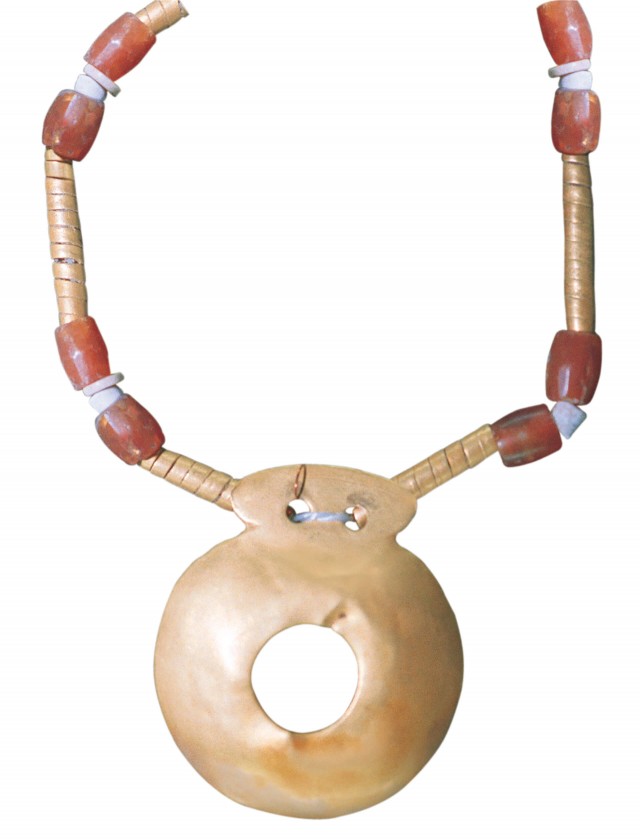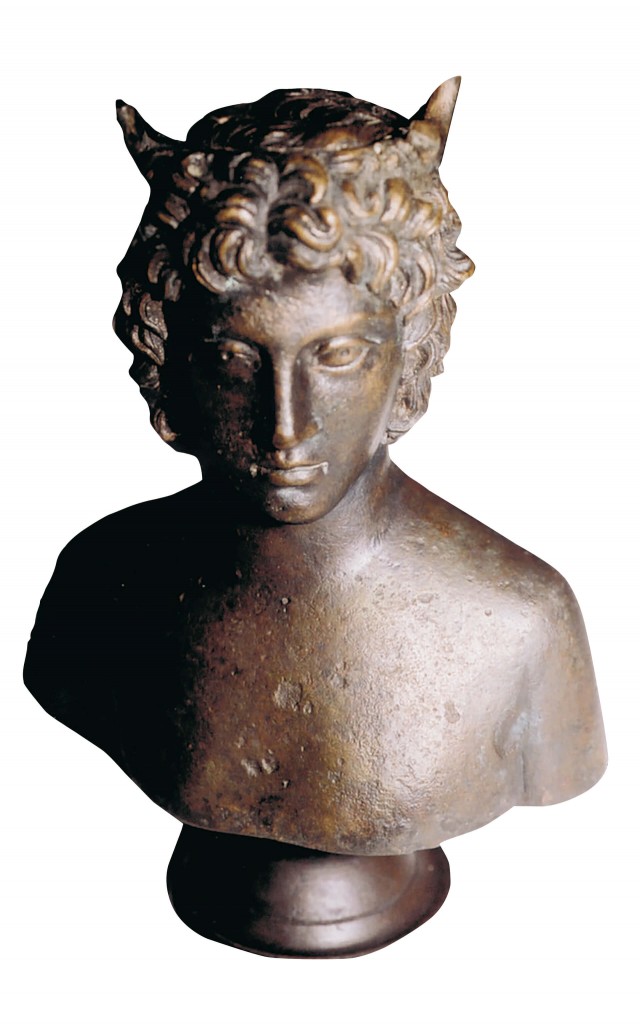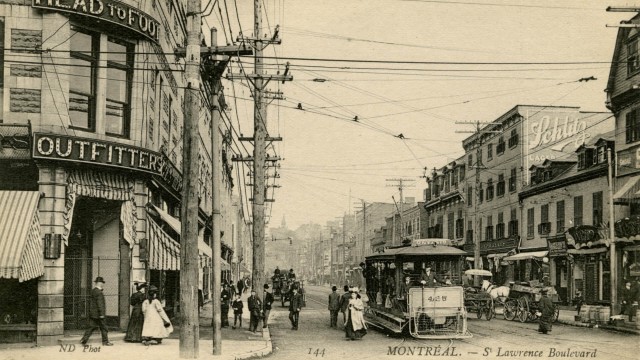Previous exhibition
November 27th, 2002 — May 25th, 2003
Varna – World's First Gold, Ancient Secrets
The Varna Museum, today one of Bulgaria's leading museums, began amassing its collection in 1887, before opening to the public in 1906.
Over the Museum's some 115 years of existence, its curators have conducted numerous archaeological digs in the ancient part of the city—once known as Odessos—and in the Varna region, i.e. northeastern Bulgaria. Thanks to their finds and to other chance discoveries, the collection today contains more than 60,000 artifacts showing evidence of every phase of human occupation of this area from the Paleolithic (100,000 BCE) to the year 1700.
This collection's reputation extends far beyond Bulgaria's borders, for it boasts humankind's oldest gold, brought to light between 1972 and 1990, along with other remarkably fine ancient and medieval artifacts. Visitors are always astounded by the beauty of these objects, but also surprised to discover that this part of Europe contains a nation and a land with such a rich archaeological and religious heritage. For this is where the first European civilization was born, reaching its peak starting in the 5th millennium before the Common Era. It was succeeded by the Thracians, the Greeks (6th century BCE), the Romans (1st-3rd century), the early Byzantine Empire (4th-6th century), nascent Christianity and the introduction of the Cyrillic alphabet.
Archaeological digs in Bulgaria since the 19th century have uncovered material evidence of some 100,000 years of human history. Let's briefly explore that history.



The glorious Copper Age
Some 4,600 years before the Common Era, a mysterious civilization emerged on the shores of lakes near the Black Sea—not far from the modern-day city of Varna. For its time, this Varna culture was amazingly advanced, both culturally and technologically. The first evidence of its existence was found in lovely ceramics, bone and stone idols and copper tools. Then an astounding chance discovery came to light, making headlines around the world. Just a few kilometres from Varna was a Copper Age necropolis (cemetery) containing the oldest gold objects ever discovered. Between 4600 and 4200 BCE, long before Mesopotamia or the Egypt of the pyramids, goldsmithing first began on the shores of the Black Sea, in the land that is today Bulgaria. Study of the 300 or so graves in the Varna I necropolis showed that there was a highly structured society here in the Copper Age. The richest graves contained gold diadems and sceptres, heavy copper axes and spear points, elegant finery and richly decorated ceramics. A large amount of shell jewellery was evidence of trade with the South, for the molluscs in question were from the Mediterranean.
The society had elaborate funerary rites: in some cases (mostly male graves), the skeleton was laid on its back; in others (mostly female graves), the skeleton was curled in a foetal position; and some graves even contained no skeleton at all. These symbolic graves, or cenotaphs, were richer than the ordinary graves and contained gold and copper objects. Another unusual rite: three of these symbolic graves contained only a human-sized clay mask, buried in the place where the head would have been. Perhaps a memorial to an individual who died far away, or ancestor worship.
In the Bronze and Iron Ages
The oldest Bulgarian people whose name has come down to us are the Thracians, who lived there from at least the 13th century BCE until the 7th century CE, when they came together to found the young Bulgarian state. The Thracians were mounted warfaring people, and they had fabulous artists and goldsmiths, along with brilliant engineers and politicians—some of whom even became emperors. The landscape is dotted with thousands of their tumuli, or burial mounds.

In the 6th century BCE
During the great period of colonization of ancient shores by the Greeks, men from the city-state of Miletus, in Asia Minor, set out for the land of the Thracians. There they founded the city of Odessos on the site of the modern-day city of Varna. Odessos is a old name thought to mean Site near water.
In the 1st century
As the Roman Empire extended all the way to the shores of the Black Sea, in the year 15 Odessos became part of the Roman province of Moesia, just above the province of Thrace. The conquerors endowed the city with new fortifications and superb thermal baths, the fourth largest in the Empire.
Starting in the 4th century
In 313, the Roman emperor Constantine the Great converted to Christianity, making it the official religion of the entire Empire. The first Bulgarians were very reluctant to abandon their pagan gods, however: it wasn't until the 9th century that King Boris I finally agreed to convert. By 395 the Empire had become ungovernable, and was divided between West and East—with the Byzantine Empire, centred in Constantinople, now holding sway.
In the 7th century
In 681, at a time when the Slavs had already settled in the lands west of the Black Sea, a wave of tribes—called Proto-Bulgarians by historians—crossed the Danube and founded the Bulgarian state. Bulgaria, at the crossroads of East and West, experienced both bloody and peaceful invasions. Constantinople was quick to recognize this First Bulgarian Kingdom, but without giving up its claim to govern it. By 1018, Bulgaria was once again under Byzantine rule. A Second Bulgarian Kingdom regained independence from 1187 to 1396, when the Turks took control of the country for more than 450 years.
The Varna Museum today holds some 60,000 objects bearing witness to the country's fabulous past. Here you can admire some of the most remarkable of these objects.

